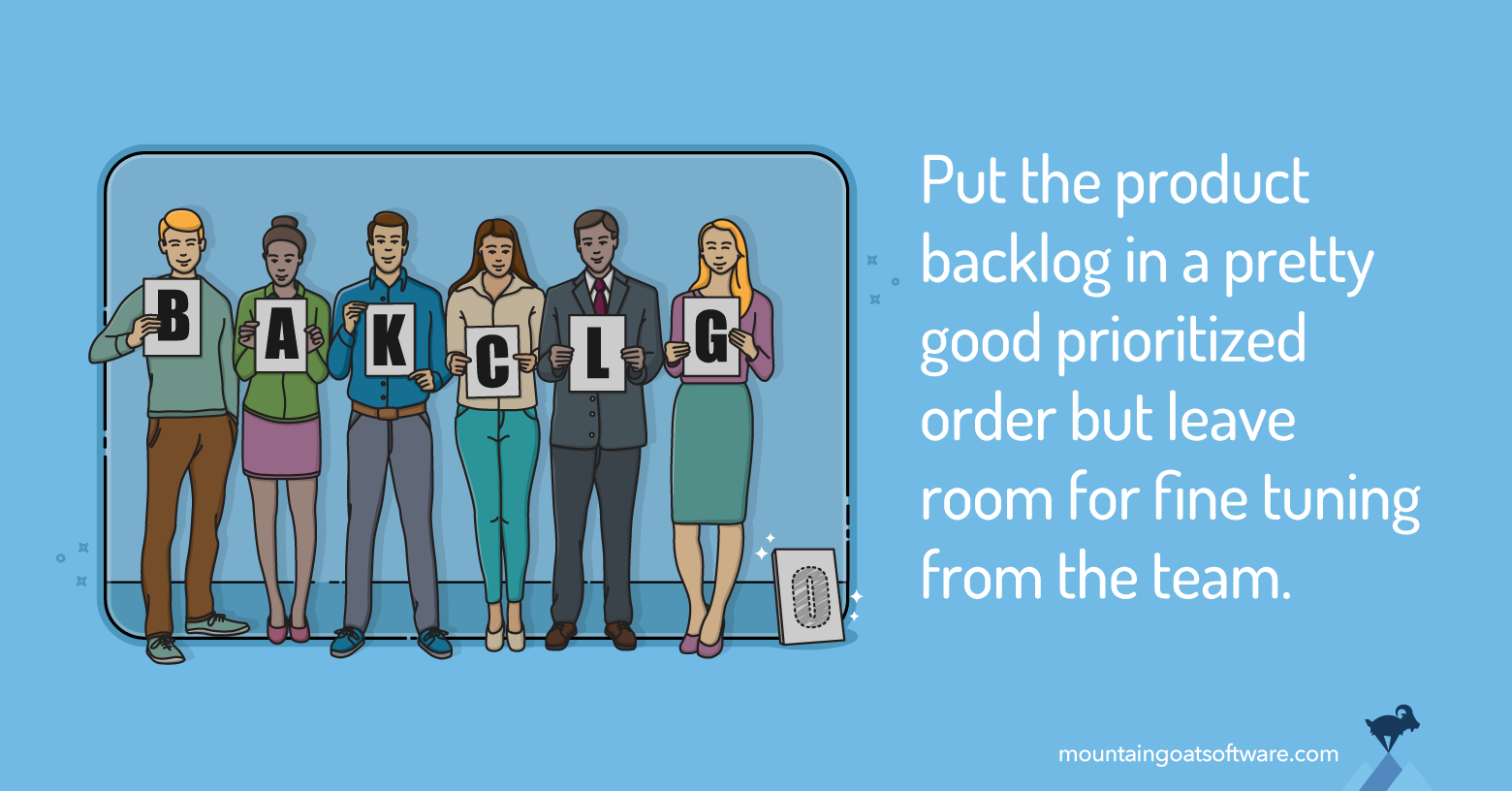A product owner hands 10 story cards to the team. The team reads them and hands the fifth and sixth cards back to the product owner. By the end of the sprint, the team delivers the functionality described on cards 1, 2, 3, 4, and 7. But the team has not touched the work of cards 5 and 6.
And I say this is OK.
Standard agile advice is that a team should work on product backlog items in the order prescribed by the product owner. And although this is somewhat reasonable advice, I want to argue that good agile teams violate that guideline all the time.
There are many good reasons for a team to work out of order. Let’s consider just a few, and consider it sufficient evidence that teams should be allowed to work out of order.
1. Synergies
There are often synergies between items near the top of a product backlog that would contribute to effective agile teamwork—while a team is working on item No. 3, they should be allowed to work on No. 6. If two items are in the same part of the system and can be done faster together than separately, this is usually a good tradeoff for a product owner to allow.
2. Dependencies
A team may agree that No. 4 is more important than No. 5 and No. 6 on the product backlog. Unfortunately, No. 4 can’t be done until No. 7 has been implemented. Finding a dependency like this is usually enough to justify a team working a bit out of the product owner’s prioritized sequence.
3. Skillset Availability
A team might love to work on the product owner’s fourth top priority, but the right person for the job is unavailable. Sure, this can be a sign that additional cross-training is needed on that team to address this problem – but, that is often more of a long-term solution. And, in the short term, the right thing to do might simply be to work a bit out of order on something that doesn’t require the in-demand skillset.
4. It’s More Exciting
OK, this one may stir up some controversy. I’m not saying the team can do 1, 2, 3, 4, and then number 600. But, in my example of 1, 2, 3, 4 and 7, choosing to work on something because it’s more exciting to the team is OK.
On some projects, teams occasionally hit a streak of product backlog items that are, shall we say, less than exciting. Letting the team slide slightly ahead sometimes just to have some variety in what they’re doing can be good for the morale of the team. And that will be good for product owners.
Bonus Reason 4a: It’s More Exciting to Stakeholders
While on the subject of things being more exciting, I’m going to say it is also acceptable for a team to work out of order if the item will be more exciting to stakeholders.
It can sometimes be a challenge to get the right people to attend sprint reviews. It gets especially tough after a team runs a few boring ones in a row. Sometimes this happens because of the nature of the high-priority work—it’s stuff that isn’t really visible or is esoteric perhaps to stakeholders.
In those cases, it can be wise to add a bit of sex appeal to the next sprint review by making sure the team works on something stakeholders will find interesting and worth attending the meeting for.
5. Size
In case the first four (plus) items haven’t convinced you, I’ve saved for last the item that proves every team occasionally works out of product owner order: A team may skip item 5 on the product backlog because it’s too big. So they grab the next one that fits.
If a team were not to do this, they would grab items 1, 2, 3, and 4 and stop, perhaps leaving a significant portion of the sprint unfilled. Of course, the team could look for a way to perhaps do a portion of item 5 before jumping down to grab number 7. But sometimes that won’t be practical, which means the team will at least occasionally work out of order.
Product Owners Aren’t Perfect
A perfect product owner would know everything above. The perfect product owner would know that the team’s DBA will be full from tasks from the first four product backlog items, and so wouldn’t put a database-intensive task fifth. The perfect product owner would know that items 2 and 5 both affect the same Java class, and would naturally prioritize them together.
But most product owners have a hard time being perfect. A better solution is for them to put the product backlog in a pretty good prioritized order, and then leave room for fine tuning from the team.
Last update: December 17th, 2024









